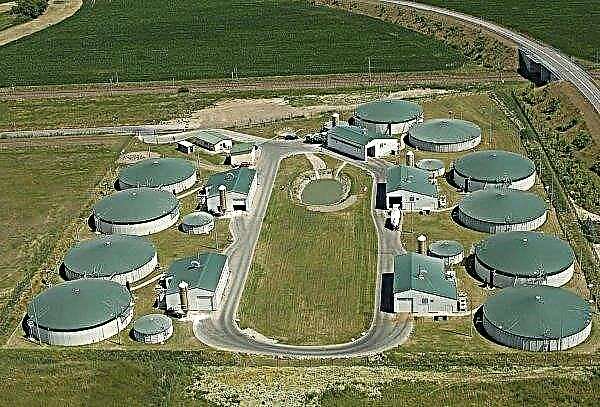A cozy summer arbor made of wood can become a place of relaxation, evening dinners in the family circle and feasts with neighbors and barbecue. For, in order to combine all these activities in one place, a 3 by 3 m structure is quite suitable. This area is enough for all of the above (up to 10 people can freely accommodate on it) and, at the same time, the construction will not take up much space on the site and will have a moderate cost.
The choice of material for construction
If you decide to build a gazebo in your own cottage, we suggest building it from a 15 × 15 cm wooden beam. This is not the cheapest material, but it is durable and looks great. Your building will look like a small solid and solid pavilion. In addition, using high-quality timber, you will make a reliable and durable construction, which time will only decorate and ennoble.

List of materials that must be purchased before proceeding with construction:
| timber 15 × 15 × 600 cm | 4 things. |
| timber 10 × 15 × 600 cm | 4 things. |
| board 5 × 15 × 600 cm | 27 pcs. |
| board 2.5 × 12 × 600 cm | 25 pcs. |
| soft ordinary tiles | 18 m |
| ridge-roof tile | 10 m |
| low tide eaves (200 cm) | 8 pcs |
| foundation bricks | 50–70 pcs. |
| wood impregnation | 10 l |
| tile 300 × 300 × 30 | 9 pcs. |
| crushed stone | 4-6 buckets |
| sand | 4-6 buckets |
| roofing material (120 cm wide) | 2 m |
| cement | 2 buckets |
A list of almost all the materials that you will need for construction is given. The rest of the interior details, for example, furniture, light, decor, you can equip the gazebo at your discretion.
Did you know? Before Peter I in Russia, arbors were called attics. For example, in 1680, according to archival documents, Tsar Fedor Alekseevich installed a “carved and painted loft” in the upper garden.
Dimensional drawing
It is from the drawing that any construction should begin, and the gazebo is no exception. Even if you clearly represent it virtually, you should always have at hand a detailed drawing of the structure, For example, you can use the following options:


Step-by-step construction
Below, all the work on the construction of a gazebo are painted step by step. Naturally, they begin to build any structure by laying the foundation. Then they erect walls and cover the roof, then perform work on the external and internal decor and arrangement of the building.
Foundation arrangement
The considered type of arbor does not differ in large mass, for it it is quite enough to make a columnar foundation of 9 racks. For this you need crushed stone, sand, brick, roofing material. The exact amount of brick depends on how flat the ground is at the construction site. If there is a slope, one or even two sides will have to lay more brick.
The procedure is as follows:
- On the selected site, dig 9 holes, 3 rows of 3 holes. The distance between the centers of two neighboring pits in any row (in length and width) is 1.5 m, depth is 35–40 cm.
- Cover the bottom of each hole with rubble, then with sand and compact well. It is necessary to lay a tile on such a pillow, and each position should be verified according to the level.
- Place brick columns on the tile, cross to cross, 2 × 2 pcs. Brick to be laid on cement. The number of rows depends on the topography of the site, if it is even and flat, two layers are enough. Your goal is to build 9 columns in such a way that the level laid on them shows a clear horizontal position in any direction.
- Roofing material needs to be laid on the finished pillars of the foundation, it will act as a waterproofing.

Bottom harness
The next stage is the manufacture of the lower harness.
The progress of work looks like this:
- You need to take 2 beams 15 × 15 × 600 cm, cut them exactly in half. You will get 4 elements of the lower harness measuring 15 × 15 × 300 cm.
- Lay the bars along the perimeter of the foundation (on the external elements), connect them using the "in the wood floor" method. To do this, cut out at the ends of each beam in half thickness (7.5 cm) 15 cm long.
- Lay the elements so that 2 opposite ones are cut out upwards, 2 others - cut out downwards. So they overlap.

Frame and upper harness
The lower harness is the foundation on which the entire frame and upper harness will be held.
Important! Before work, all wooden elements should be covered with wood-preserving impregnation, for example, Tikkurila Eko Wood, Luxens, Pinotex Ultra, etc., so that the arbor can serve for a long time, while remaining strong and beautiful.
Further work algorithm looks like this:
- From the remaining bars 15 × 15 × 600 cm, make poles 200 cm long. At the corners of the structure, install 4 such columns (15 × 15 × 200 cm). In the middle of each of the three sides, place 4 columns of 10 × 15 × 200 cm (cut them from a beam of 10 × 15 × 600 cm), on the fourth side, install two of these bars - this will be the entrance aperture. On what wall it will be located, you should think in advance. The width of the opening is 1 m, that is, from each corner you need to step back 1 m and install poles. Fix vertical elements with metal corners and self-tapping screws.
- After mounting the racks, the time has come for the upper trim. For it, a 10 × 15 × 600 cm beam is used. Elements are made in the same way as the lower harness: saw a six-meter beam in half. Mount "in the floor of the tree."

Floor
Before laying the floor, it is necessary to install logs, a total of 5 pcs. Elements need to be cut out of the beam 10 × 15 × 600 cm, and with the help of corners and screws install upward with the edge between the opposite sides of the lower trim, every 50 cm. The floor boards will be laid on these elements.
The floor itself is made of boards 5 × 15 cm, across the direction of the lags. Between boards it is necessary to maintain intervals of 3-4 mm, serving as drains. At the corners, as well as in other places where vertical posts are located, cuts should be cut.

Roof and roof
The roof will be four-pitched, with a classic rafter structure. Rafters are made from a bar 10 × 15 cm (base) and boards 5 × 15 cm (directly rafters), they form 4 equal triangles with the lower strapping.
The roof should be done below, on the ground. You can even begin to make the roof immediately after installing the lower trim, which will serve as a kind of carpentry workbench. After the roof is ready, it should be removed to the side and continue work in the above manner.
Important! For the manufacture of the roof, you can use other materials, not only soft tiles. For example, roofing iron, corrugated board or ondulin.
When you finish the construction of the upper harness, you need to raise the rafter structure on it and fix it with metal mounting plates and screws. After the roof is installed and fixed, it should be sheathed with a 2.5 × 12 cm board. You will lay soft tiles on this skin.

Walls
As such, the gazebo does not have walls. Their role is played by a fence, which is a 15 cm wide railing horizontally between posts made of 5 × 15 cm boards. The height of such handrails is 1 m. 10 cm from the floor, parallel to it, between the posts you should make spacers from the same board 5 × 15 cm.
In the space between the railing and the lower struts, two beams are located, cross to cross, between opposite corners. The given wall manufacturing option is just an example. You can change the design and make the walls to your liking. You can simply sew up the space between the floor and the railing with planks arranged vertically.

Arrangement, decoration and protection of the structure
When the construction is ready, it is worth thinking about its arrangement. For example, a rather original solution would be to curtain the gazebo from all sides with a mosquito net.
Did you know? Today, the word “kiosk” is perceived by us as a small retail outlet where you can buy newspapers, tobacco, souvenirs, jewelry. This word came to us from France in the XVIII century. and meant "flower arbor, pavilion", a small decorative structure.
In addition, this option also has a functional load:
- high-quality mesh will protect from annoying insects;
- in any weather, even in bright sun, there will be a pleasant shade inside the structure;
- The material is good rain protection.
 But there is a drawback to this solution - the beautiful appearance of the structure will be hidden under the grid.
But there is a drawback to this solution - the beautiful appearance of the structure will be hidden under the grid.
Naturally, the arrangement of the interior depends entirely on your imagination and capabilities. Fortunately, in such an area there is where to go for creative abilities. The gazebo can be decorated in the style of a bungalow by hanging bamboo curtains, installing sun loungers and a light table. Or do everything in the courtyard style - with benches and a massive wooden table.
Check out

And you can use the oriental style by laying carpets and throwing pillows on them, and in the middle put a low dastarkhan (although in the rain everything will need to be removed).
Since there are no stationary elements inside the gazebo, you can change stylistic decisions from time to time, making fresh notes in your relaxation area. You can sew up the upper part of the gazebo with a diagonal pergola grid and plant grapes.
In any case, the internal (as well as the external) design of the gazebo makes it possible to show your own creative and design abilities.
Well, of course, you should take care of the wiring of electricity and lighting equipment. As light fixtures, you can use small LED devices, or hang a vintage lamp in the form of a “kerosene” under the ceiling.

You can take the given project of a summerhouse arbor as a basis, supplementing it with your own solutions. For example, make a gable roof or come up with your own design for wall cladding. The main thing is that the constructed structure pleases you and your loved ones with coziness, comfort and beauty.












